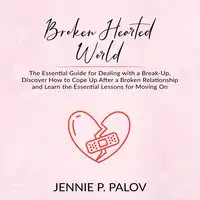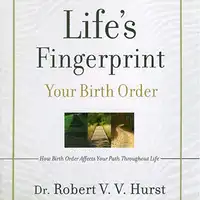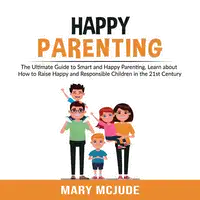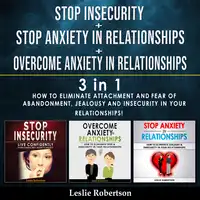Sounded ID: 9781667998329
ISBN: 9781667998329
Publication Date: August 04, 2022
Publisher: Author's Republic
Language: English
Author Name: Jim Colajuta
Narrator Name: Jim Chapel
Infants are born with a variety of intrinsic behaviors that help them survive. In times of need or suffering, the infant's attachment behavior allows them to bring others towards them. Infants that have experienced a solid attachment bond acquire a strong expectation of feeling protected and safe, allowing them to explore their surroundings with greater confidence.
Our attachment instinct, shared by most mammals, is a fundamental adaptation for survival in infancy. When newborns are scared, anxious, feel ill, or are threatened, their attachment system is triggered. In this stage, infants...
Infants are born with a variety of intrinsic behaviors that help them survive. In times of need or suffering, the infant's attachment behavior allows them to bring others towards them. Infants that have experienced a solid attachment bond acquire a strong expectation of feeling protected and safe, allowing them to explore their surroundings with greater confidence.
Our attachment instinct, shared by most mammals, is a fundamental adaptation for survival in infancy. When newborns are scared, anxious, feel ill, or are threatened, their attachment system is triggered. In this stage, infants will commence proximity-seeking behaviors such as weeping, clinging, or following with their eyes in babies, and more verbal or complex behaviors in older children toward their primary attachment figure (normally a parent or the main caregiver). The attachment method can be removed once proximity and reassurance have been reached. Seeking help and the various techniques an individual takes to get aid are the foundations of the attachment process.
Based on repeated contact with significant others, the child develops a set of mental models of itself and others in social interactions in response to parenting behavior. These early attachment interactions are critical for subsequent social relationships, emotional and stress regulation capacities, self-control, mentalization, and emotional maturity. As a result, a child who forms insecure or disorganized relationships, maybe due to mistreatment or placement in several foster care homes, is more likely to suffer in these areas and exhibit emotional and behavioral challenges.
| # | Title | Duration |
|---|---|---|
| 1. | Opening |
0 mins 17 secs |
| 2. | Introduction |
1 mins 42 secs |
| 3. | Attachment Theory |
11 mins 08 secs |
| 4. | The Process Of Attachment |
11 mins 56 secs |
| 5. | The Internal Working Model |
14 mins 33 secs |
| 6. | Parental Influences On Social Achievement Goals |
12 mins 00 secs |
| 7. | Therapeutic Parenting |
35 mins 42 secs |
| 8. | Closing |
0 mins 26 secs |
$5.99

$10.99

$5.99

$11.99

$5.99

$5.99

$5.99

$15.99

$12.99

$5.99

$11.99

$29.99



